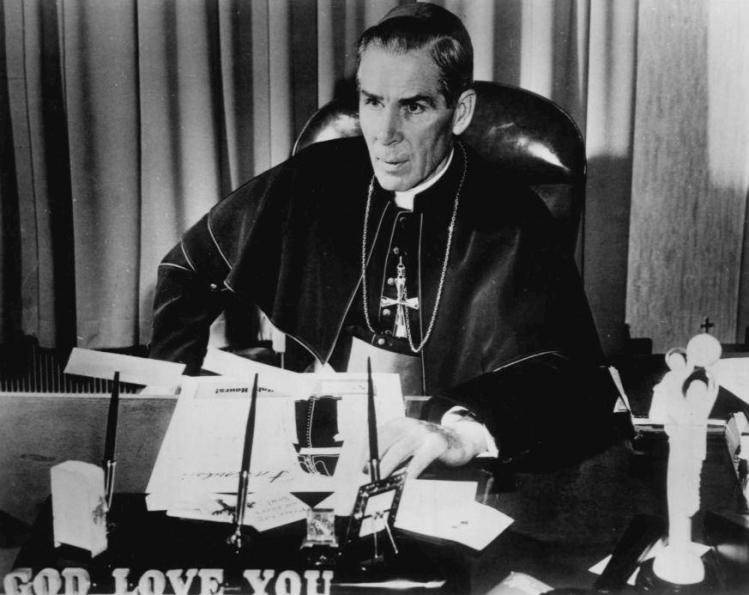The Catholic Imagination, Then & Now
 Bishop Fulton J. Sheen, 1956 / Wikimedia
Bishop Fulton J. Sheen, 1956 / Wikimedia
By Paul Baumann
May 20, 2017
I recently spoke, alongside my colleague Dominic Preziosi, at Fordham University’s Lincoln Center Campus at a conference on “The Future of the Catholic Imagination.” Joining us on the panel was America Editor Matt Malone, and that magazine’s Executive Editor Kerry Weber; former Commonweal editor and long-time contributor Margaret O'Brien Steinfels was the moderator. Thanks to Angela O’Donnell, associate director of Fordham’s Curran Center for American Catholic Studies, for inviting us to participate.
The conference was, at least in part, an extended response to the poet Dana Gioia’s 2013 essay in First Things about what he characterized as the crisis of the contemporary Catholic writer and the relative absence of a Catholic literary presence in the larger secular culture. Gioia looked back to the immediate post-World War II years as the high-water mark for the visibility and influence of Catholic writers in America. Near the end of Gioia’s essay he wrote: “The necessary work of writers matters very little unless it is recognized and supported by a community of critics, educators, journalists, and readers.”
I certainly agree.
The historian Kevin Starr subsequently wrote a very interesting and informative essay, The Lost World: American Catholic Non-fiction at Midcentury, in response to Gioia’s article. It is published by Wiseblood Essays in Contemporary Culture. Starr agreed with Gioia, but added that “a strong component of the sustaining Catholic culture in that era that resulted in such notable fiction and poetry was an all-pervasive and equally productive non-fiction culture.”
https://www.commonwealmagazine.org/catholic-imagination-then-now